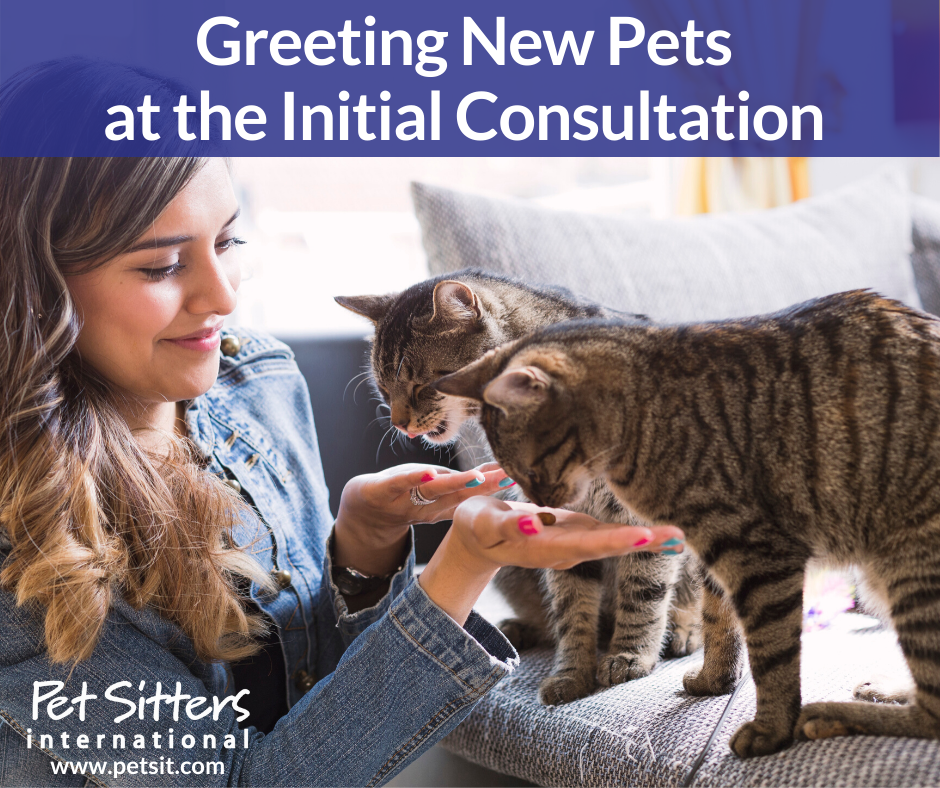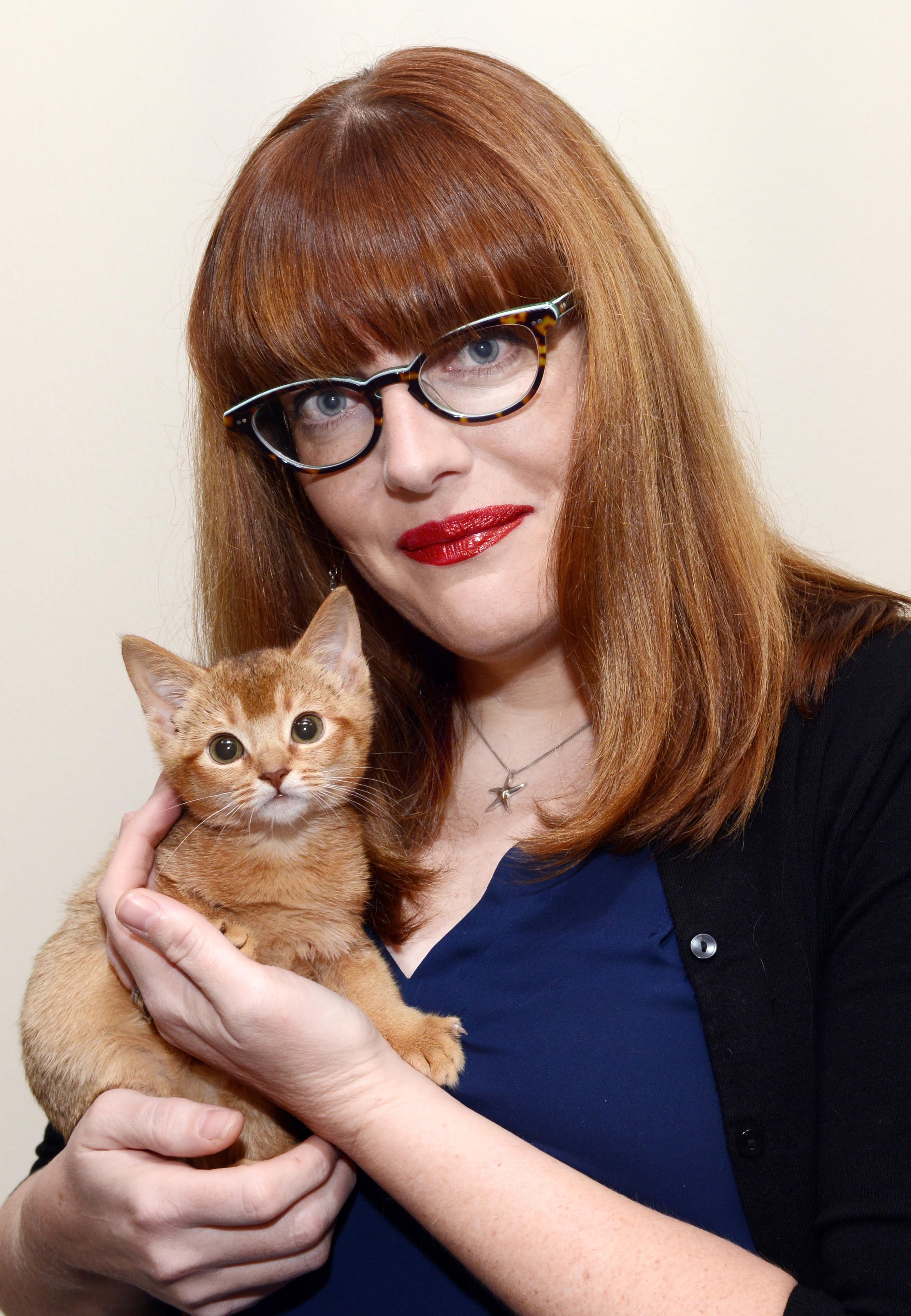Greeting New Pets at the Initial Consultation
By Katenna Jones, ScM, ACAAB, CCBC, CDBC, CPDT-KA
This article first appeared in the Jan/Feb 2018 issue of Pet Sitter's World magazine.

Initial greetings with a new pet you’ll be sitting for are very important and set the tone (positive or negative) for future visits. Creating good associations with your arrivals is a great way to begin, and giving delicious snacks every time you arrive can typically be effective. Remember to always ask about dietary restrictions or sensitivities before giving treats. Be sure to have a variety in case they don’t like what you offer, while some may not be interested at all— that’s okay.
Choose the owner or the pet to greet first.
When meeting pets for the first time, it is common to continuously touch them while looking at and talking to the owner. Unfortunately, meeting both at the same time can be like talking on the phone while ordering at the drive-thru: you’re not giving full attention to either, thus not effectively communicating with either. When you first arrive, do your best to first greet either the owner OR the pet, but not both at the same time so you don’t miss informative behavioral cues. Once that greeting is completed, you can greet the other.
Pay attention to what the pet is saying.
During every greeting, pay close attention to what the pet is saying. If they do not approach you, move toward them slowly and gently while talking softly and offering snacks. Stop several feet away and encourage the pet to come to you. If the pet moves away at any point, stop and back up several feet. If they choose not to interact, don’t push.
If the owner attempts to intervene, gently explain that you find pets who make the decision on their own adapt to future visits faster. If the pet approaches and allows you to touch them, keep in mind there is a big difference between enjoyment and tolerance. I encourage asking pets for consent, rather than expecting them to simply receive petting.
Scratch them two or three times, then stop. If the pet walks away, they likely tolerated your petting and don’t want any more – respect that. If they solicit more petting, they likely want more. Periodically ask for consent throughout your first several visits, to show pets that you are someone who listens.
By going slowly, respecting communication, and being a reliable source of great things you can gain the trust of pets much faster and set yourself up safer, more enjoyable future interactions. I think we can all agree, that is a great goal to have.

About Katenna Jones:
Through Jones Animal Behavior, Katenna Jones provides behavior consulting services to cat and dog owners, advises local rescues, is an instructor and mentor for the International Association of Animal Behavior Consultants, and speaks internationally on a variety of topics. She is the author of Fetching the Perfect Dog Trainer: Getting the Best for You and Your Dog and regularly contributes content to a variety of outlets including Chewy, Pet MD, Dogster, and more.
Katenna earned her Master’s in Experimental Psychology from Brown University where she studied animal behavior, learning and cognition. She is an Associate Certified Applied Animal Behaviorist, Certified Cat and Dog Behavior Consultant, Certified Pet Dog Trainer and is Certified Fear Free. Katenna shares her Rhode Island home with her husband, an adopted cat and dog, chickens, and honeybees.







Comments
kingpetfoods
Lorrie Wold
Pam Leary
Jeanne Brown